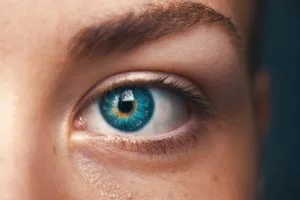What is Vision Correction?
October 16, 2017
 Vision correction procedures, such as LASIK, can reduce your dependence upon glasses and even make you completely glasses free! Vision correction surgeries fall into two basic groups.
Vision correction procedures, such as LASIK, can reduce your dependence upon glasses and even make you completely glasses free! Vision correction surgeries fall into two basic groups.
There are vision correction procedures for the cornea and vision correction surgery for the lens. The cornea and the lens are the only two structures in the eye which can focus light.
The Cornea and the Lens
The cornea focuses more light than any other structure in the eye. The cornea is responsible for about 75% of the total "refractive" power of the eye.
The surface of the cornea gives the cornea it's tremendous focusing ability. Hence, small alterations in the curvature of the cornea can result in dramatic changes in your refraction and your ability to see without glasses.
The lens of the eye also focuses light. Vision correction procedures involving the lens work by increasing or decreasing the power of the lens. The lens constitutes a minor role in the focusing power of the eye.
Corneal Vision Correction
Vision correction procedures involving the cornea all work by altering the shape of the cornea.
Examples of refractive surgery involving the cornea include:
These procedures ALL work by reshaping the cornea. They vary in the method by which the cornea is reshaped. For instance, RK involves the creation of radial incisions in the cornea whereas the others involve a laser.
LASIK employs the precision of a laser and precisely reshapes the cornea based upon your refraction. For example, if you are nearsighted, laser vision correction procedures can reshape the corneal surface enough to neutralize your nearsightedness, allowing you to become glasses free.
The Raindrop Near Vision Inlay works in similar fashion. The inlay is placed within the layers of the cornea and causes a very subtle "bump" on the corneal surface. This slight change of the corneal surface improves near vision lost to presbyopia.
Eye Surgery Involving the Lens
The most common vision correction procedure is cataract surgery.
Cataracts cause blurry vision, dulling of colors, glare and other vision disturbances. Cataract surgery involves removal of the cataract and replacing it with a clear implant. The clear implant restores the quality of your vision.
By altering the power of the implant, your distance or near vision can be affected. For instance, if you are nearsighted, an implant can be selected to allow you to see at distance. Similarly, an implant power can be calculated to allow you to read up close. This is so-called "monovision."
Presently, the Symfony IOL is indicated for patients who have vision loss from cataract and presbyopia (near vision loss).
Considering vision correction? Call us to make your appointment (301.825.5755).
#visioncorrection, #LASIK, #refractive, #lasereyesurgery
Shilpa Rose, M.D.
Vision Correction & Dry Eye Specialist
Mark Whitten, M.D.
Vision Correction Surgeon
LASIK, Cataract & Raindrop
The material contained on this site is for informational purposes only and is not intended to be a substitute for professional medical advice, diagnosis, or treatment. Always seek the advice of your physician or other qualified health care provider.
These are surgical procedures and results may vary. While infrequent, complications can occur. Before your procedure, you will read an Informed Consent document which discusses potential complications and risks. Dr. Whitten will thoroughly review this information with you and answer your questions.



